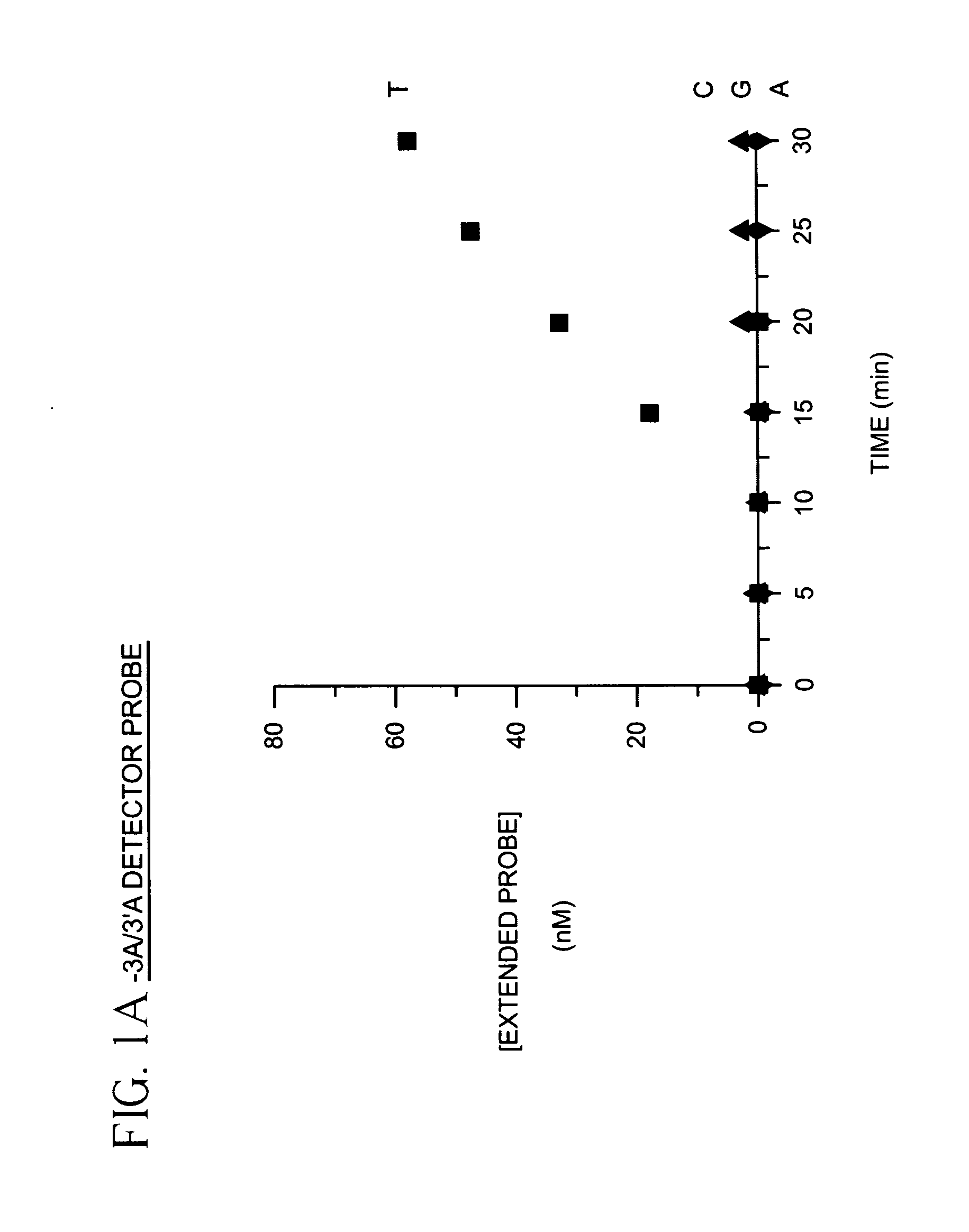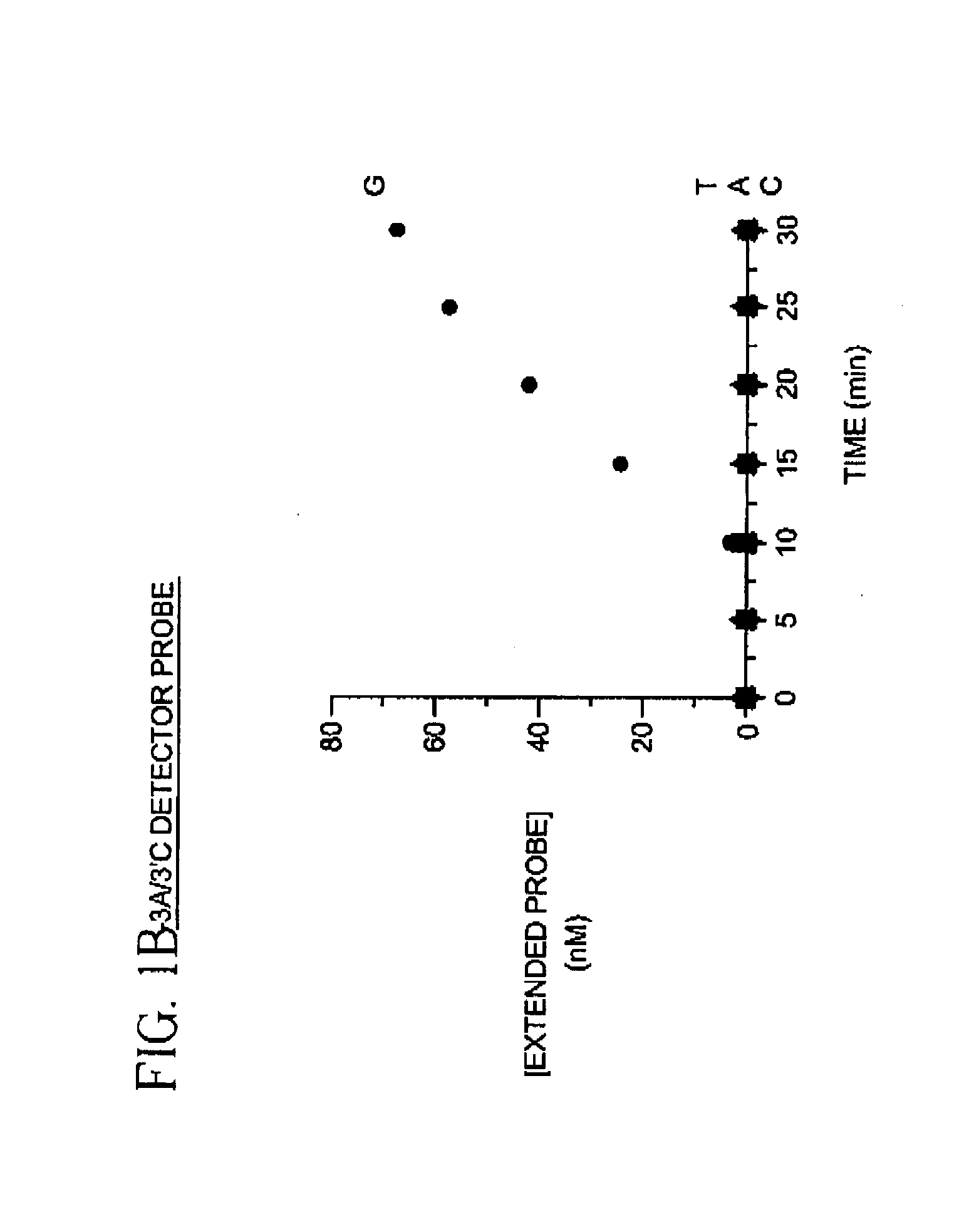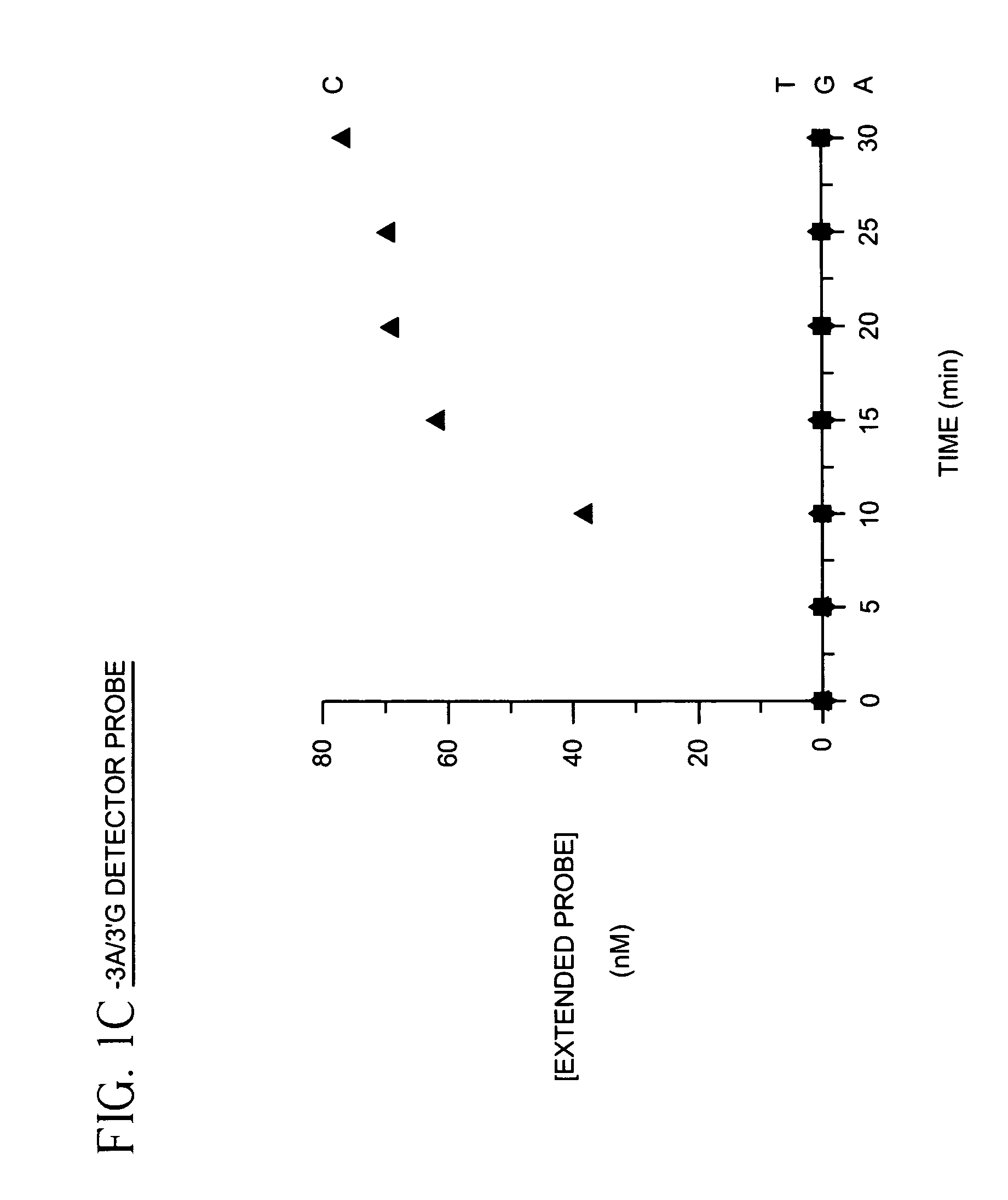Methods for detecting single nucleotide polymorphisms
a single nucleotide polymorphism and polymorphism technology, applied in the field of methods for detecting sequence variations in nucleic acids, can solve the problems of slow and laborious techniques, and cannot be used, and achieve the effect of reducing the efficiency of primer extension
- Summary
- Abstract
- Description
- Claims
- Application Information
AI Technical Summary
Benefits of technology
Problems solved by technology
Method used
Image
Examples
example 1
[0025]To demonstrate identification of a single nucleotide polymorphism using labeled detector primers model target oligonucleotides differing by only a single nucleotide were prepared as follows: Four oligonucleotides containing identical sequences except at one position were synthesized. The variant position of the oligonucleotide contained either adenosine (A), cytosine (C), guanine (G) or thymine (T). A fifth oligonucleotide complementary to the 3′ termini of the four variant oligonucleotides was also synthesized. Each of the four variant oligonucleotides was mixed with the fifth oligonucleotide, heated for 2 min. in a boiling water bath and equilibrated to 37° C. in a dry incubator. The annealed variant oligonucleotide and the fifth oligonucleotide were then extended in a primer extension reaction comprising 14 mM deoxycytidine α-(O-1-thio)-triphosphate, 2 mM deoxyadenosine triphosphate, 2 mM deoxyguanosine triphosphate, 2 mM thymidine triphosphate and 40 units of exonuclease d...
example 2
[0029]Example 1 was repeated except that the detector / signal primers were synthesized so that the variant, diagnostic nucleotide was positioned one nucleotide from the 3′ terminus of the detector primer (N-1) and the overall length of the detector primer was shortened by 4 nucleotides at the 5′ end. The detector primers also made a perfect match with the target DNA at the position three nucleotides from the 3′ terminus of the detector primer. Each of the four detector primers was added to separate SDA reactions containing 104 molecules of each of the target sequences. The targets were amplified and detected as previously described. FIGS. 2A (−1A detector primer), 2B (−1C detector primer), 2C (−1G detector primer) and 2D (−1T detector primer) show the results of the experiments. In every case, during amplification the detector primer was preferentially extended on the target which contained the perfect match at the variant position. Signals obtained with the perfectly matched detecto...
example 3
[0031]In the following experiments, a single nucleotide polymorphism in exon 4 of the HFE gene (the gene responsible for hemochromatosis) and the wild-type allele were detected and identified simultaneously in real-time during amplification using the detector primers of the invention. The wild-type allele is a G at nucleotide 845, whereas the mutant allele is an A at this position. This results in a cysteine to tyrosine change at amino acid position 282 in the protein.
[0032]SDA was generally performed as described in U.S. Pat. No. 5,846,726, except that each reaction mixture contained two detector / signal primers according to the invention (one specific for the mutant allele and one specific for the wild-type allele) and BsoBI was substituted for AvaI. The final concentrations of components in each 100 μL reaction were 50 mM KiPO4 (pH 7.5), 6.0 mM MgOAc, 0.2 mM each dTTP, dGTP, dATP, 1.4 mM dCTPαS, 5 μg / mL acetylated BSA, 15% (v / v) glycerol, 400 ng salmon sperm DNA, 20 units exo Klen...
PUM
| Property | Measurement | Unit |
|---|---|---|
| total volume | aaaaa | aaaaa |
| concentrations | aaaaa | aaaaa |
| wavelength range | aaaaa | aaaaa |
Abstract
Description
Claims
Application Information
 Login to View More
Login to View More - R&D
- Intellectual Property
- Life Sciences
- Materials
- Tech Scout
- Unparalleled Data Quality
- Higher Quality Content
- 60% Fewer Hallucinations
Browse by: Latest US Patents, China's latest patents, Technical Efficacy Thesaurus, Application Domain, Technology Topic, Popular Technical Reports.
© 2025 PatSnap. All rights reserved.Legal|Privacy policy|Modern Slavery Act Transparency Statement|Sitemap|About US| Contact US: help@patsnap.com



